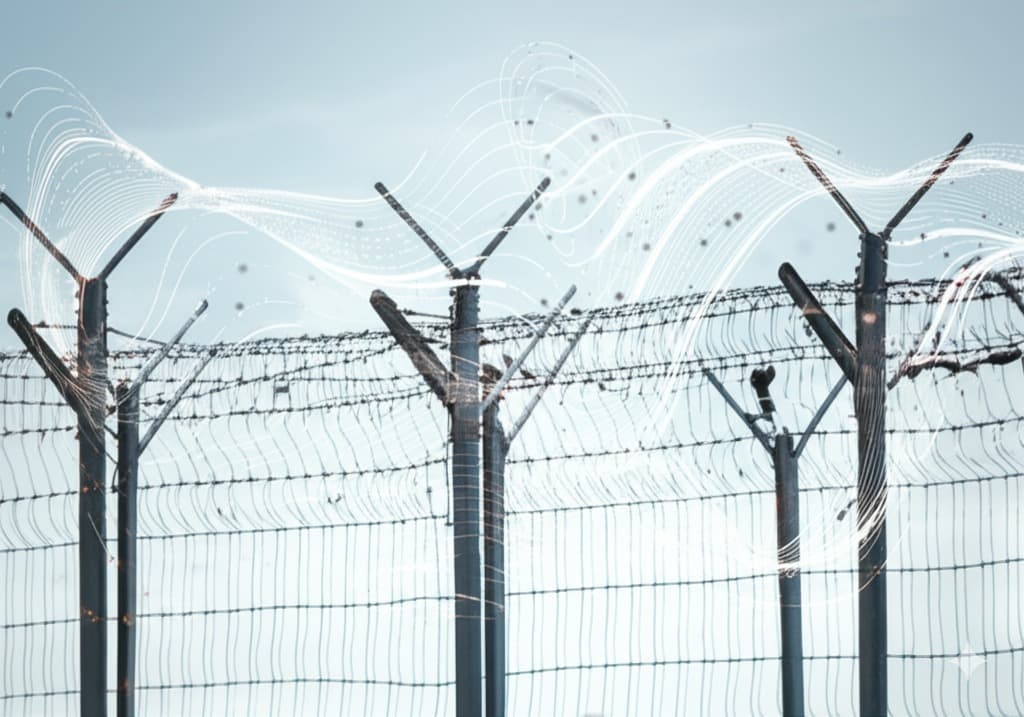Enhancing Perimeter Security with Intelligent Sound Monitoring



Protecting valuable assets and ensuring the safety of personnel relies heavily on robust perimeter security. Traditional methods often involve visual surveillance, which can be limited by environmental conditions and human fatigue. However, a new era of security is dawning, powered by intelligent sound monitoring. By leveraging the capabilities of Artificial Intelligence (AI), organizations can now create more effective, proactive, and reliable perimeter security systems.
This blog post explores how AI-driven sound monitoring is revolutionizing perimeter security. We'll delve into the technology, its key benefits, diverse applications, and why acoustic intrusion detection is becoming a crucial component of modern security strategies.
Keywords: perimeter security, intelligent sound monitoring, AI security, acoustic intrusion detection, AI surveillance, sound sensors, security technology, threat detection, false alarm reduction, proactive security, smart security, AI algorithms.
The Limitations of Traditional Perimeter Security
While visual surveillance technologies like cameras play a vital role in perimeter security, they face several inherent limitations:
- Visibility Issues: Adverse weather conditions such as fog, heavy rain, and snow can significantly impair camera effectiveness. Darkness also presents a major challenge without specialized (and often costly) thermal or night vision equipment.
- Blind Spots: Physical obstructions, landscaping, and the sheer scale of a perimeter can create blind spots that intruders can exploit.
- Human Factor: Monitoring vast amounts of video feeds can lead to operator fatigue and missed events.
- Reactive Nature: Often, traditional systems only alert security personnel after an intrusion has already occurred.
Image: Security cameras mounted on a perimeter fence, highlighting the visual nature of traditional security and its potential limitations.
The Power of Intelligent Sound Monitoring
Intelligent sound monitoring offers a complementary and often superior approach to perimeter security by leveraging the power of acoustics and AI. Strategically placed sound sensors can detect a wide range of auditory events that may indicate a security breach, such as:
- Fence Disturbances: The sound of wire being cut, a fence being climbed or shaken.
- Breaking Glass: Indicating an attempted entry through windows or doors near the perimeter.
- Footsteps: Detecting human presence in areas where it shouldn't be.
- Vehicle Sounds: Identifying unauthorized vehicles approaching or breaching the perimeter.
- Human Speech: Alerting to suspicious conversations or activity.
The "intelligence" comes from the AI algorithms that analyze the audio data in real-time.
Image: A digital representation of an AI brain analyzing sound waves, illustrating the core of intelligent sound monitoring.
Key Benefits of AI-Driven Sound Monitoring for Perimeter Security
Implementing intelligent sound monitoring offers numerous advantages for enhancing perimeter security:
- Early Threat Detection: Sound can often travel around obstacles and be detected before a visual breach occurs, providing valuable early warning.
- Reduced False Alarms: Sophisticated AI algorithms can differentiate between genuine threats and common environmental noises (wind, animals, traffic), significantly reducing false positives and improving operator efficiency.
- Coverage in Low Visibility: Unlike visual systems, sound monitoring remains effective in darkness and adverse weather conditions.
- Wide Area Coverage: A network of strategically placed sound sensors can cover large perimeters more cost-effectively than deploying extensive visual surveillance.
- Enhanced Situational Awareness: Audio cues can provide additional context to visual information, offering a more comprehensive understanding of events.
- Proactive Security Posture: By detecting suspicious sounds early, security personnel can intervene before an intrusion escalates.
- Cost Efficiency: Reduced false alarms and potentially lower infrastructure costs compared to extensive visual-only systems can lead to long-term cost savings.
Image: A visual representation of sound waves emanating from a fence line, being detected by an unseen intelligent monitoring system.
Applications of Intelligent Sound Monitoring in Perimeter Security
Intelligent sound monitoring can be deployed across a wide range of applications to bolster perimeter security:
- Critical Infrastructure Protection: Securing power plants, water treatment facilities, and transportation hubs.
- Commercial Properties: Protecting warehouses, retail centers, and office complexes from break-ins and theft.
- Residential Security: Enhancing the security of large estates and gated communities.
- Correctional Facilities: Monitoring perimeters to prevent escapes and detect disturbances.
- Data Centers: Safeguarding sensitive information with an additional layer of acoustic surveillance.
- Construction Sites: Preventing theft of valuable equipment and materials.
- Remote Locations: Monitoring pipelines, communication towers, and other assets in isolated areas.
Image: A chain-link fence surrounding a commercial property, an environment where intelligent sound monitoring can provide enhanced security.
The Technology Behind Intelligent Sound Monitoring
The effectiveness of intelligent sound monitoring hinges on several key technological components:
- Acoustic Sensors (Microphones): Deployed strategically along the perimeter to capture audio signals. These sensors can range from simple microphones to more sophisticated directional or vibration-sensitive devices.
- Edge Computing: Processing audio data locally at the sensor level to filter out noise and perform initial analysis before transmitting relevant information.
- AI Algorithms (Machine Learning): Trained on vast datasets of sounds to identify patterns indicative of threats while ignoring non-threatening noises. These algorithms can include techniques like deep learning and neural networks.
- Centralized Analysis Platform: Receiving and further analyzing data from multiple sensors, correlating events, and generating alerts for security personnel.
- Integration with Existing Security Systems: Seamlessly integrating with video management systems (VMS), access control systems, and alarm systems for a unified security solution.
Keywords: acoustic sensors, edge computing security, AI algorithms for security, machine learning in surveillance, centralized security platform, security system integration, audio analytics, smart sensors.
Conclusion: A Smarter Approach to Perimeter Security
Intelligent sound monitoring represents a significant evolution in perimeter security. By harnessing the power of AI to analyze and classify sounds, organizations can overcome the limitations of traditional visual-centric approaches, achieve earlier threat detection, reduce false alarms, and create a more proactive and resilient security posture. As AI algorithms continue to advance and acoustic sensor technology improves, intelligent sound monitoring will undoubtedly become an increasingly essential component of comprehensive perimeter security strategies for a wide range of applications.
Call to Action: How do you see intelligent sound monitoring impacting the future of security in your industry or community? Share your thoughts and questions in the comments below! Don't forget to share this blog post to spread awareness about this innovative security technology.



